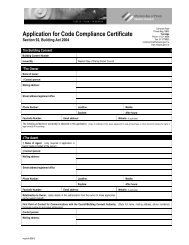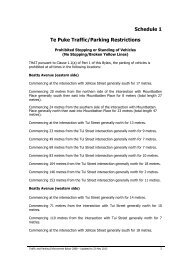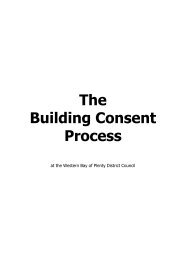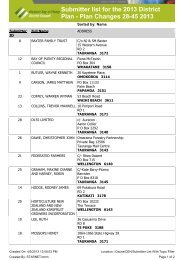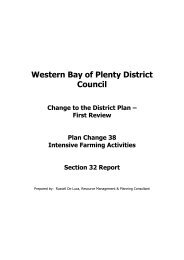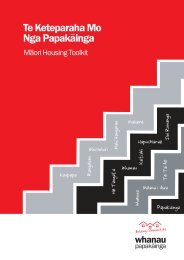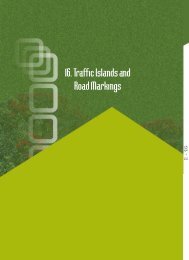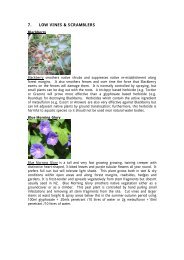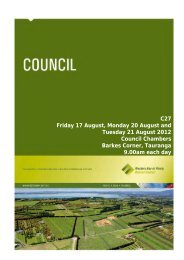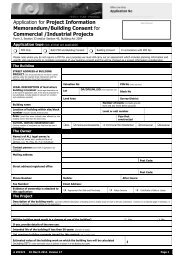Built Heritage Inventory - Western Bay of Plenty District Council
Built Heritage Inventory - Western Bay of Plenty District Council
Built Heritage Inventory - Western Bay of Plenty District Council
Create successful ePaper yourself
Turn your PDF publications into a flip-book with our unique Google optimized e-Paper software.
WBOP <strong>Built</strong> <strong>Heritage</strong> Study1 IntroductionThe following inventory provides a preliminary list <strong>of</strong> built heritage within the <strong>Western</strong> <strong>Bay</strong><strong>of</strong> <strong>Plenty</strong> district. It identifies places currently scheduled in the <strong>District</strong> Plan and placeswhich have been registered by the New Zealand Historic Places Trust. It also identifiesplaces <strong>of</strong> built heritage value which have not yet been recognised in either schedule.The study area identified for this inventory is limited to the current commercial areas <strong>of</strong> TePuke and Katikati and the townships <strong>of</strong> Waihi Beach and Maketu. A number <strong>of</strong> otherimportant places within the urban environs <strong>of</strong> Te Puke and Katikati have been included. Inaddition to these, significant places in other areas directly associated with the study areashave been included. A basic record form has been prepared for each item listed in theinventory, providing preliminary physical and historic data and a brief assessment <strong>of</strong>heritage significance using the criteria specified in the Resource Management Act 1991and Environment <strong>Bay</strong> <strong>of</strong> <strong>Plenty</strong> Regional Policy Statement 2005.This inventory has been developed using a thematic survey approach. The main advantage<strong>of</strong> a theme-based methodology is that it focuses on relationships between buildings, eventsand people over a larger area than might be covered in an area based survey. This helpsprevent excessive focus on a particular building type, period or event and also providesuseful contextual information for defining the heritage significance <strong>of</strong> a place.The thematic contexts identified for the study were:Early Settlement: Sites associated with early settlement <strong>of</strong> the district.Residence: Residences associated with notable people, events or architectural styles.Industrial: General industrial sites, including mining, forestry and manufacturing.Agricultural: Sites associated with agricultural and horticultural developments in the districtCommercial: Sites associated the development <strong>of</strong> commerce in the district.Transport: Sites associated with the development <strong>of</strong> transportation in the districtCivic/Admin: Sites associated with local government or public amenitiesHealth: Sites associated with the development <strong>of</strong> health care in the district.Education: Sites associated with the development <strong>of</strong> education in the district.Religion: Sites with religious associations (e.g. churches, church halls, vicarages).Recreation: Sites associated with recreation activities or sports.Community: Sites associated with community groups, clubs and societiesMemorials: Memorial sites, commemorating people, events or places.In evaluating the information provided through community consultation and the research,care was taken to ensure that a representative selection <strong>of</strong> all the identified themes wasincluded. The spread <strong>of</strong> items within each theme was then reviewed to determine therepresentativeness and significance weighting <strong>of</strong> individual items.3-37829.0017 March 2008 1



